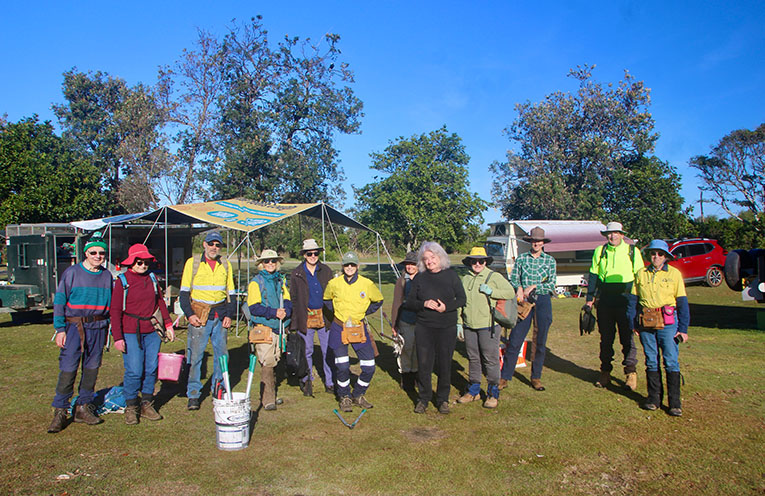A DEDICATED team of local landcare groups and volunteers has contributed more than $240,000 worth of labour towards the restoration of key habitats in Crowdy Bay National Park.
Eighteen volunteers attended the National Parks Association’s (NPA) annual bush regeneration camp in June, coinciding with the conclusion of a four-year $127,000 grant from the NSW Environmental Trust for the Dunbogan-Crowdy Bay NP Habitat Corridor Restoration Project.
The trust supports projects that enhance natural environments across New South Wales.
The project, led by the Hastings-Macleay National Parks and Wildlife Service, brings together partners including Port Macquarie-Hastings Council, Crown Lands, Dunbogan Bushcare Group, Friends of Kattang, NPA and Hastings Landcare.
Since 2007, the Environmental Trust has supported the initiative through three separate four-year grants.
Sue Baker, coordinator of the NPA and Dunbogan Bushcare contribution, praised the collaboration and commitment involved.
“This ongoing project is a glowing example of cooperation and dedication and a presentation on its success will be made at the NSW Annual Weeds Conference in August,” she shared with News Of The Area.
“We can never thank the trust enough for what has been achieved.”
The results are impressive.
The project has restored 39 hectares of endangered habitats, including the largest area of littoral rainforest in the Port Macquarie-Hastings region.
Over 1600 native seedlings have been planted by Dunbogan Bushcare, supported by council-funded contractors working across other sites.
The 2019 bushfires devastated the littoral rainforest at the northern end of Kylies Beach, but nature has made a remarkable comeback.
Thanks to follow-up care and generous rainfall, the canopy has returned and new species continue to emerge.
Themeda grasslands, another endangered habitat, have been protected in the Kattang Nature Reserve through the removal of invasive prickly pear.
Across the wider corridor, hundreds of hectares have benefited from targeted restoration.
Bitou bush, once rampant along this stretch of coastline, has been largely eradicated thanks to the continued efforts of NPWS and their annual aerial foredune spraying.
With additional funding, this work has extended further south.
“It is so sad to know that bitou bush is now the dominant plant on 500 km of the NSW coastline but also a joy to see our progress here,” Sue said.
The NPA holds two regeneration camps a year in the park, with the next scheduled for September.
Dunbogan Bushcare meets on Monday mornings, Friends of the Pilot Station on Tuesdays, and Friends of Kattang at various times.
Laurieton United Services Club Landcare also meets along the river foreshore on Friday mornings.
For more information, phone 6559 7134.
By Luke HADFIELD



